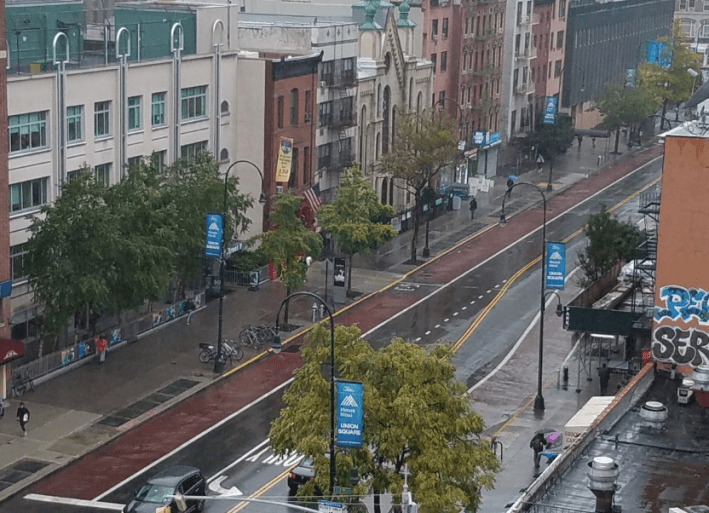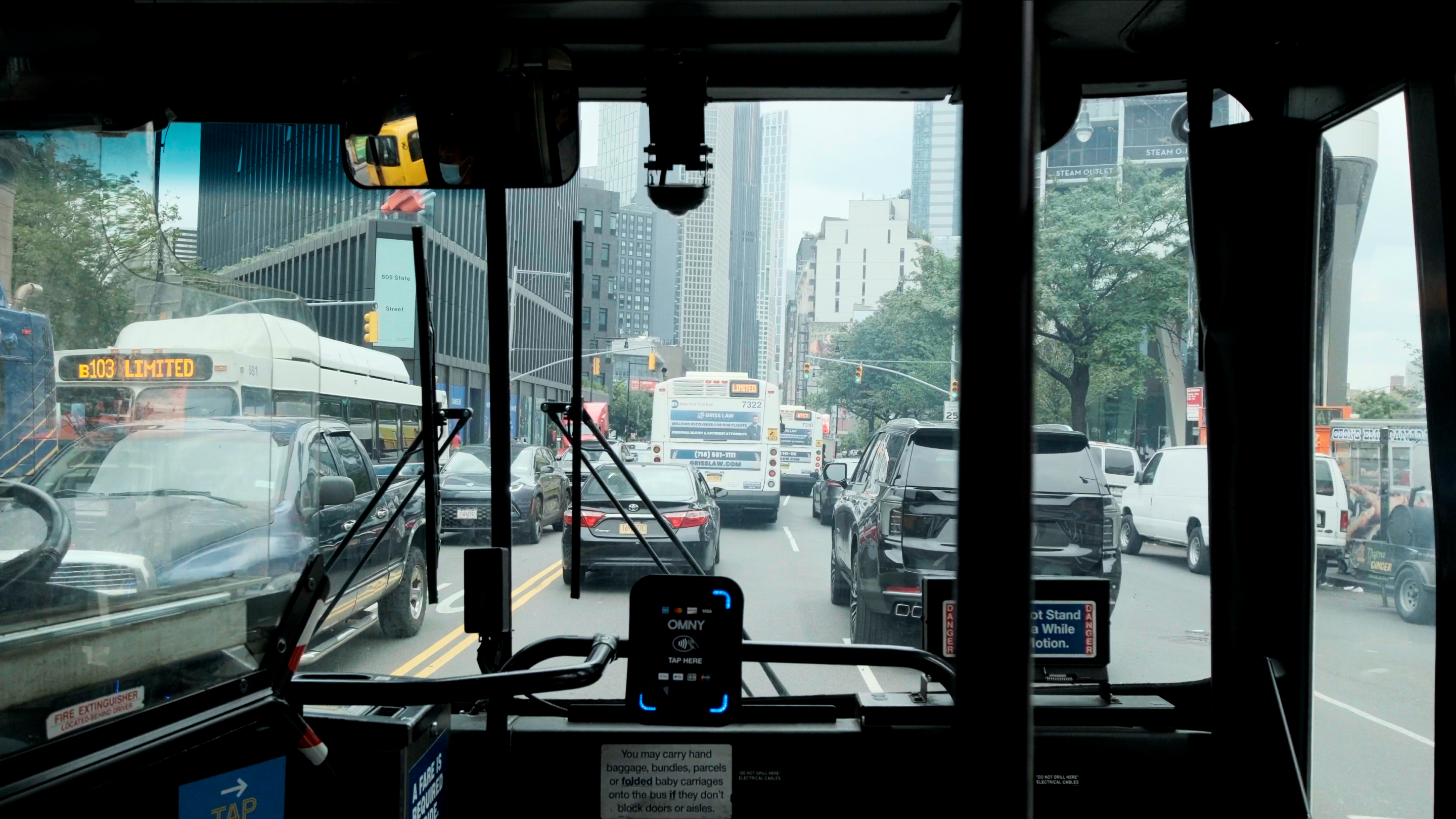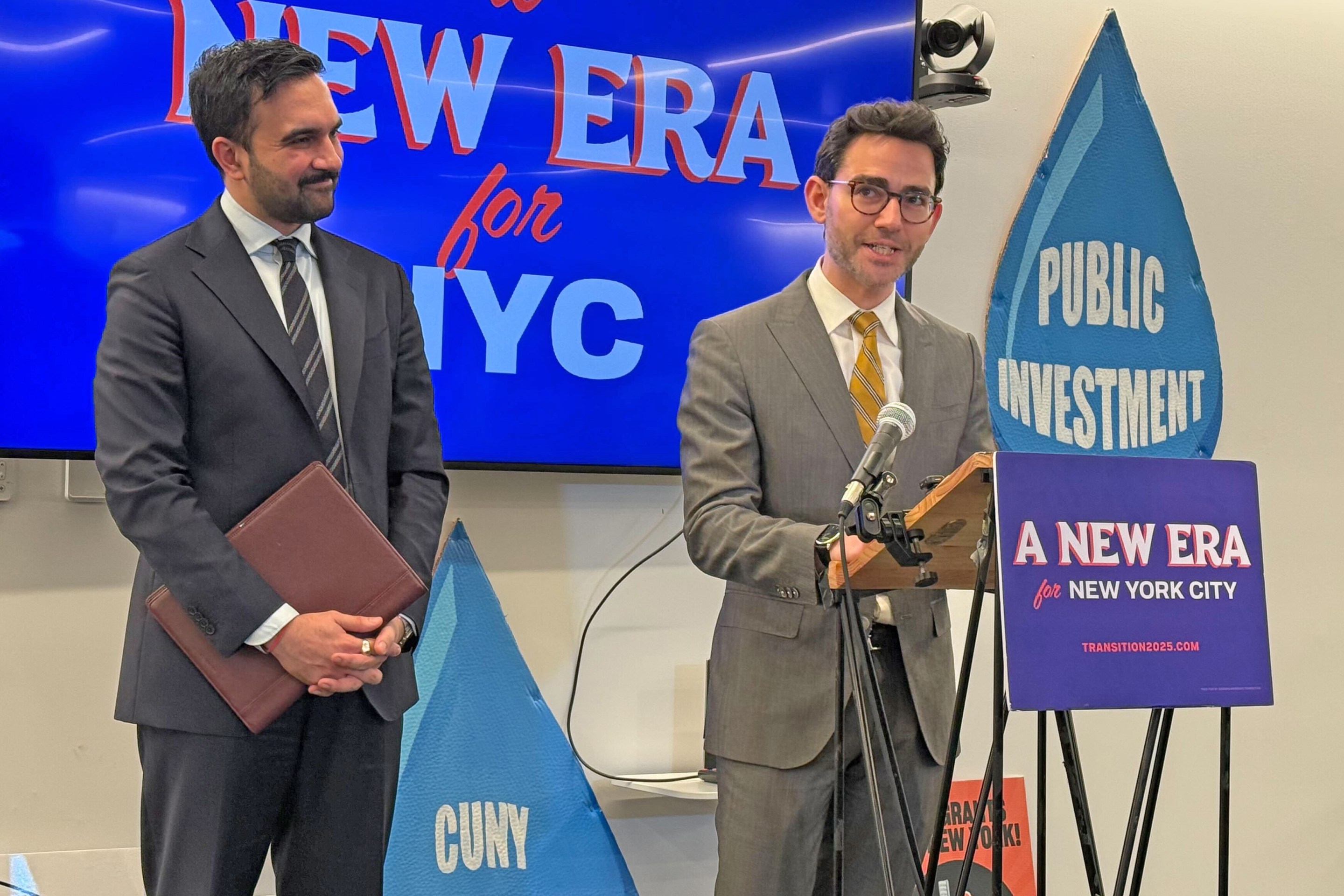Bus riders are begging for change.
Last week's historic 34th Street bus challenge — in which Team Pedestrian once again trounced people riding the M34 — reiterated the age old question: Where is the damn bus and why don't our elected officials care?
The answer? Probably stuck in traffic thanks to decades of political neglect and car dependent planning.
"Politicians? They want you to vote for them and then they forget about you the next day," said rider Fernando Reyes. "They couldn't care less.”
Streetsblog spoke to Brooklyn straphangers about their grievances regarding the city's pathetic bus service for another episode of "Clarion Call":
But maybe change is coming. Mayor-in-waiting Zohran Mamdani has promised to speed up what are the slowest buses in the nation — they average less than eight miles per hour.
The impacts of bad bus service are huge, especially in a city where 1.1 million New Yorkers ride the bus every day. For many, the bus is the only option for getting around. And, those who use the bus are more likely than the average New Yorker to be foreign-born, low-income, and people of color.
Like many of the city's woes, the onus of slow buses falls on a reluctance to reduce car dependency. The city is legally required to build 30 miles of new, dedicated bus lanes per year, but Mayor Eric Adams has failed to ever come close to that mark.
Bus lanes have improved speeds by as much as 50 percent in parts of the city, but that hasn't stopped Adams from pausing and then unpausing work on the 34th Street busway and completely stopping the development of the Fordham Road busway.

"There's a lot of cars around," said Joe, who decided to walk after his bus simply skipped his stop. "So it's hard for [the buses] to go as fast as they normally would."
One angry straphanger also commented on bus bunching, where buses end up close together, arriving at once, and creating long wait times. "Four or five buses show up at the same time!" said the lady as she exited the bus.
Historically, buses have been viewed as second class transit, both in New York City, and the country as a whole. But recently, a concerted political effort to improve bus service has put buses in the spotlight.
The MTA has redesigned the bus networks in Queens and The Bronx to improve reliability and speed, and will soon do the same in Brooklyn.
And congestion pricing has reduced traffic in Manhattan, speeding up (some) buses, and raising (some) funds for newer electric buses.
There are still significant barriers to improvements, like Mayor Adams, but more bus riders are understanding the ways in which the city has failed the million or so New Yorkers who rely on the service.
"I feel like they should work more on the streets," said Crystal, whose bus was stuck in car traffic on Bedford Avenue. "And making sure the buses have all the space they need to drive."
Bus fans will be happy to hear that the New York Transit Museum's Annual Bus Festival is returning to Brooklyn Bridge Park on Sept. 21.






